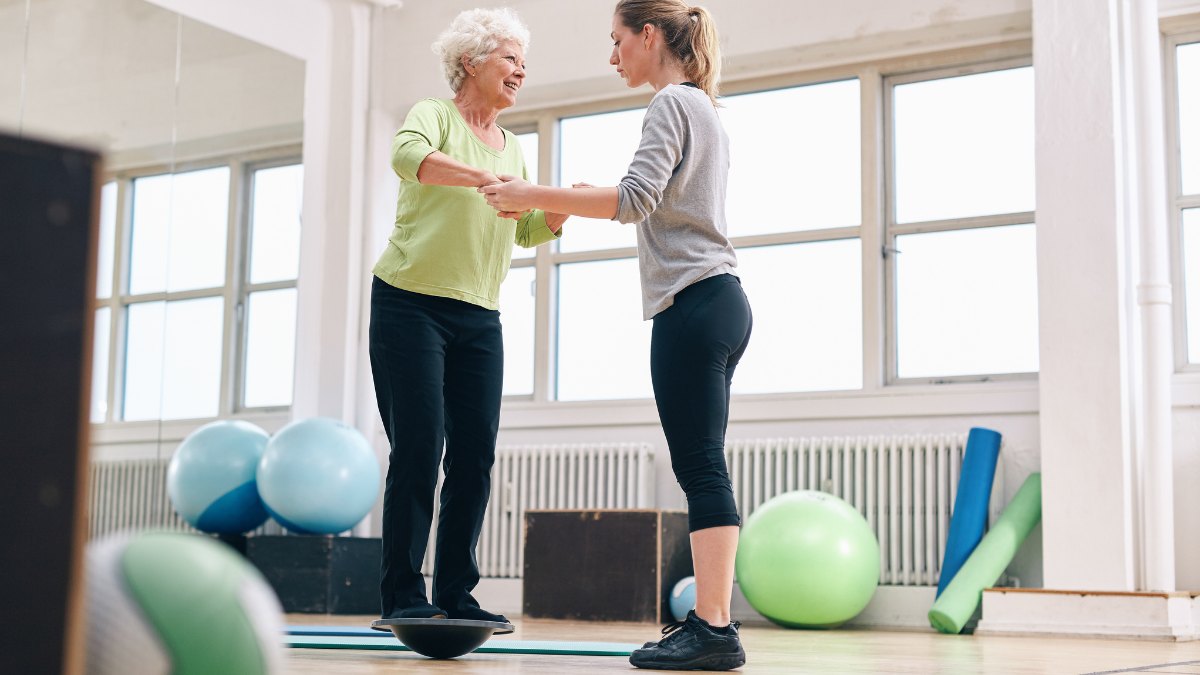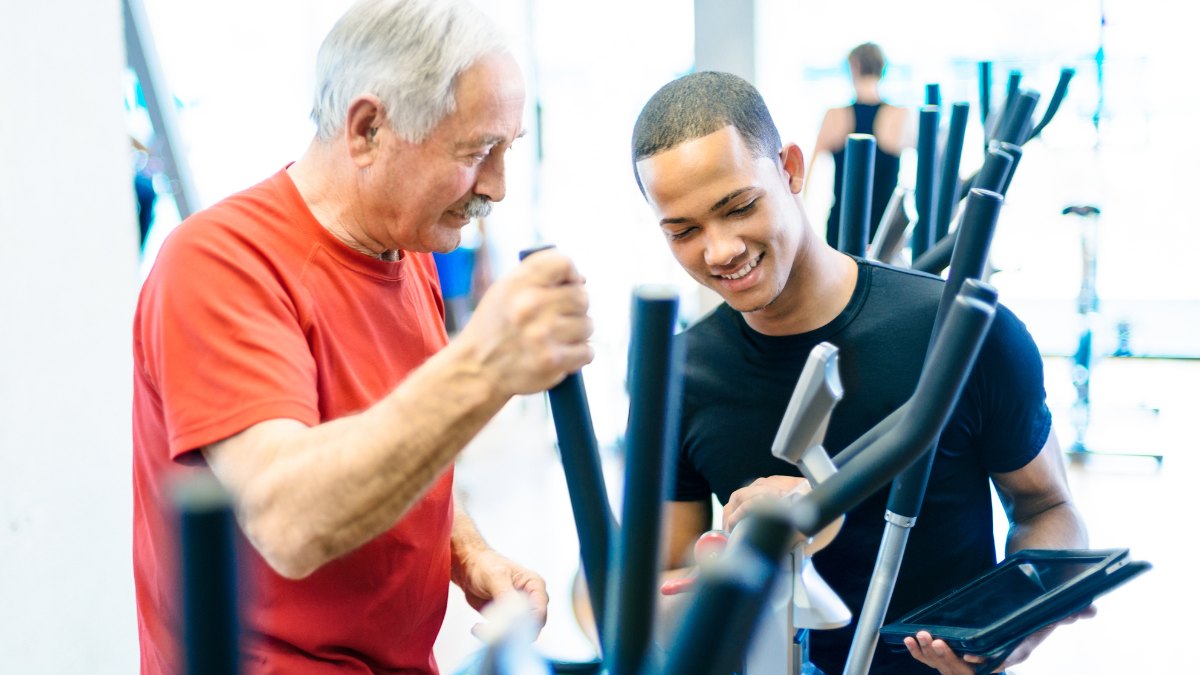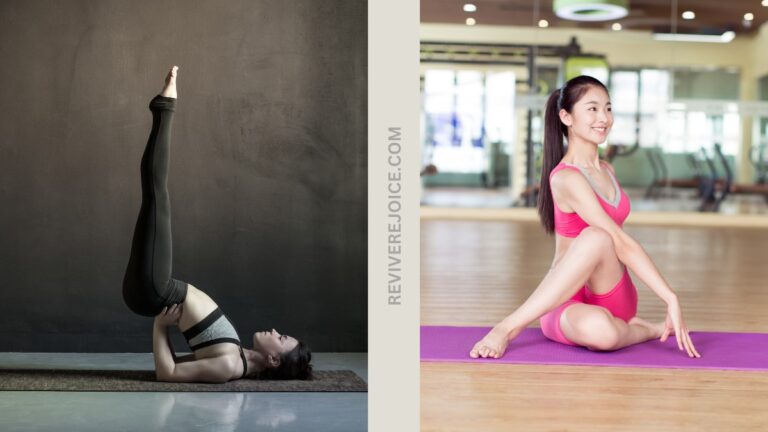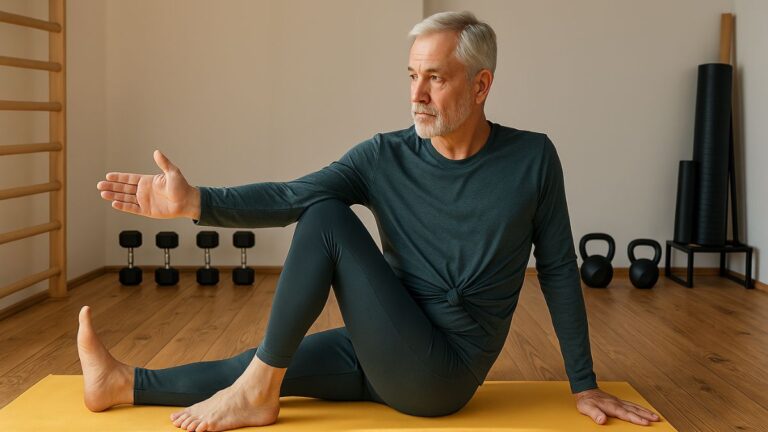I help seniors improve their balance–these 5 exercises everyone should do now to protect their body for the future
Are you noticing those little wobbles when you stand up? The hesitation before taking stairs? That sudden grab for support when turning around? Poor balance doesn’t just appear overnight—it sneaks up gradually, threatening your independence and safety.
Many seniors accept this as inevitable aging, but I’ve helped hundreds reclaim their stability. The good news? You don’t need fancy equipment or hours of training.
Just five simple moves, done consistently, can dramatically strengthen your balance systems and prevent falls. Ready to feel confident on your feet again? These game-changing exercises will transform how you move through the world.
1. The Neurobalance Deadlifts
Single-leg Romanian Deadlifts combined with mental challenges create powerful brain-body connections essential for older adults.
As you balance on one leg and hinge forward, try counting backward from 100 by 7s or naming states alphabetically.
Your brain forms new neural highways that help prevent falls when you’re distracted in daily life.
Tips for Neurobalance Deadlifts:
- Start with simple mental tasks and progress to more challenging ones
- Use a sturdy chair or wall for support until balance improves
- Focus on proper form first before adding cognitive challenges
- Practice 2-3 times weekly for best results
- If counting becomes too easy, try reciting a poem or spelling words backward
2. Vestibular Reset Deadlifts
Vestibular Reset Deadlifts incorporate gentle head movements during traditional single-leg RDLs to wake up your inner ear balance system.
While balancing on one leg and hinging forward, slowly turn your head left, then right, or nod up and down.
This trains your body to maintain stability when looking around—crucial for activities like checking traffic while crossing streets.
Tips for Vestibular Reset Deadlifts:
- Begin with small, slow head movements before attempting larger ones
- Breathe normally throughout the exercise
- Look at fixed points when turning your head to reduce dizziness
- Perform near a wall or with a spotter for safety
- Stop immediately if experiencing severe dizziness or nausea
3. Moving Target March
The Moving Target March strengthens the connection between your eyes, brain, and balance systems.
Hold a light water bottle or small dumbbell at eye level while marching in place. Move the object slowly from side to side, following it with your eyes without turning your head.
This exercise prepares you for navigating crowded spaces like grocery stores or busy sidewalks where visual tracking becomes critical.
Tips for Moving Target March:
- Use very light weights (1-2 pounds) or even just a water bottle
- Keep movements slow and controlled
- Gradually increase the range of the object’s movement
- Try changing the height of the object to challenge different visual angles
- Practice in different lighting conditions to adapt to real-world scenarios
4. Perturbation Training
Perturbation Training builds reactive strength through unexpected balance challenges. While performing standing marches with light dumbbells, have a partner gently nudge your shoulder or hip at random moments.

Your body learns to quickly recover from sudden instability—similar to being bumped in a crowded hallway or catching yourself when stepping off a curb.
This training develops fast-twitch muscle fibers responsible for catching yourself before a fall happens.
Tips for Perturbation Training:
- Ensure pushes are gentle and appropriate for your ability level
- Communicate clearly with your partner about force and frequency
- Always have something stable nearby to grab if needed
- Gradually increase the unpredictability of the pushes
- Practice on different surfaces once basic skills improve
5. Barefoot Sensory Stimulation
Barefoot Sensory Stimulation awakens dormant nerve endings in your feet that cushioned shoes have silenced.

Perform basic balance exercises like single-leg stands or gentle marches while barefoot on various textures—a yoga mat, grass, sand, or a textured balance pad.
Your feet send clearer signals to your brain about your position in space, improving overall balance. This sensory-rich training helps compensate for age-related decreases in foot sensitivity.
Tips for Barefoot Sensory Stimulation:
- Begin on safe, clean surfaces before trying more challenging textures
- Inspect feet regularly, especially if you have diabetes or circulation issues
- Start with just 5 minutes daily and gradually increase duration
- Try closing your eyes briefly to intensify the sensory experience
- Create a “sensory path” with different textures to walk across
Related Article:
FINAL THOUGHTS
Balance training works best when integrated into your regular routine and progressively challenged. Consistency outweighs intensity when building these neural connections.
These five specialized exercises target the often-neglected sensory systems that maintain balance—vestibular, visual, proprioceptive, and cognitive. Always prioritize safety by starting with support nearby and advancing gradually.
Most seniors see noticeable improvements within 4-6 weeks of regular practice. Remember that balance is a skill that responds to training at any age, so approach these exercises with patience and persistence.







